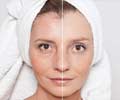The disconnect between how old we feel and how old we want to be can offer insights into the relationship between our views on aging and our health.

‘Instead of telling people to feel young, we could help people by encouraging them to raise their ‘ideal’ age.’
Read More..




SAD is determined by taking how old you feel, subtracting how old you would like to be and then dividing it by your actual age. The higher the score, the more you feel older than you want to be.Read More..
For this study, researchers enrolled 116 adults aged 60-90 and 107 adults aged 18-36. Study participants filled out an online survey every day for eight days.
The survey was designed to assess how old participants felt each day, their ideal age, their positive and negative mood over the course of the day, any stresses they experienced, and any physical complaints, such as backaches or cold symptoms.
“We found that both older adults and younger adults experienced SAD,” Neupert says. “It was more pronounced in older adults, which makes sense. However, it fluctuated more from day to day in younger adults, which was interesting.”
“We think younger adults are getting pushed and pulled more,” says Jennifer Bellingtier, first author of the paper, and a researcher at Friedrich Schiller University Jena.
Advertisement
Two additional findings stood out.
Advertisement
Neither finding was surprising, but both show the value of the SAD concept as a tool for understanding people’s views on age and aging. It may also offer a new approach for the way we think about aging and its impacts on health.
“Previous research has found that how old you feel can affect your physical and mental well-being, and interventions to address that have focused on trying to make people feel younger,” Neupert says.
“That approach is problematic, in that it effectively encourages ageism,” says Bellingtier.
“Our findings in this study suggest that another approach to improving well-being would be to find ways to reduce this subjective age discordance. In other words, instead of telling people to feel young, we could help people by encouraging them to raise their ‘ideal’ age.”
Source-Eurekalert








